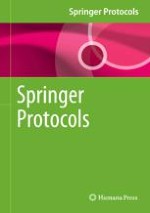
2015 | Online First | Buchkapitel
Characterization of Bacterial Symbionts in Deep-Sea Fauna: Protocols for Sample Conditioning, Fluorescence In Situ Hybridization, and Image Analysis
verfasst von : Sébastien Duperron
Erschienen in: Springer Protocols Handbooks
Verlag: Springer Berlin Heidelberg
Aktivieren Sie unsere intelligente Suche, um passende Fachinhalte oder Patente zu finden.
Wählen Sie Textabschnitte aus um mit Künstlicher Intelligenz passenden Patente zu finden. powered by
Markieren Sie Textabschnitte, um KI-gestützt weitere passende Inhalte zu finden. powered by